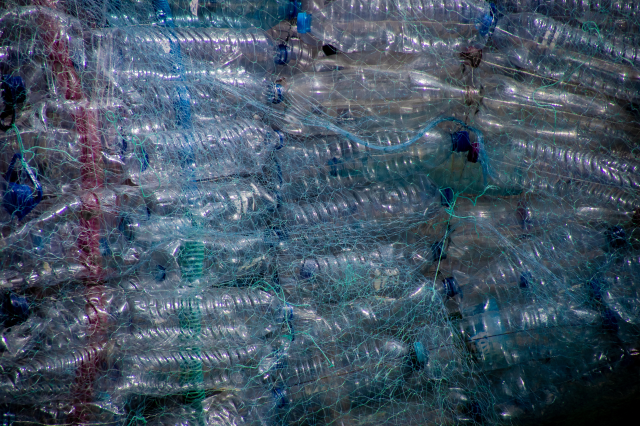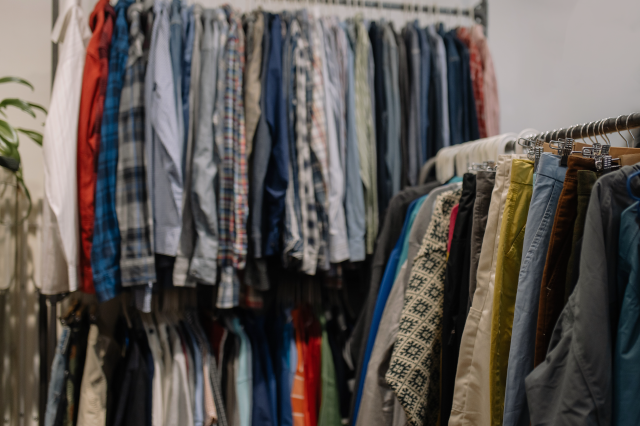6 Easy Ways To Live A More Sustainable Lifestyle
Whether you’re worried about the increasing cost of living or the knock-on effects of a modern lifestyle, moving towards more sustainable living can offer multiple benefits. In this article, we’ll explore all things related to sustainable living, from mending clothes to consuming less dairy.
So stay tuned if you’re ready to make sustainable changes that can contribute toward a better future for the planet and its inhabitants…
Buy pre-loved clothes
For many, it can be tempting to purchase fast fashion when looking for that perfect new outfit. Unfortunately, the convenience of having cheap clothes delivered to your home in a flash comes at a cost. From creating toxic waste to underpaid workers, and child labour to greenhouse gas emissions, the fast fashion market is harmful to people and the planet.
Fast fashion companies rely on the next trend to keep stock moving, so with each season comes another batch of cheap, poor-quality clothes that, on average, will only get worn a handful of times.
The easiest way to combat this is to simply stop purchasing from fast fashion companies and shop for pre-loved items instead. Head to your local charity shop, check out second-hand websites or exchange clothes with friends.
Mend your clothes & textiles
Not only is mending your or your children’s clothes a great way to extend their lifespan, but it can also be an extremely relaxing and rewarding experience. You can also repair plenty of other things in your home instead of shopping for a replacement, such as curtains, pillows, bedding and shoes.
Clothes go through a lot of wear and tear, even quality garments, but the difference between fast fashion and quality clothes becomes clear over time. Cheap clothes often fall apart and disintegrate, whereas high-quality pieces tend to take much longer for holes and discolouration to occur, whilst remaining functional.
Repair your clothes by:
- Using embroidery to cover small stains or tears
- Adding patches to cover rips and tears or to protect the fabric
- Replacing buttons, clasps, zips and velcro
- Re-dying stained or marked garments
- Replace broken elastic waistbands
Sewing is relatively easy and can be done using just a few tools such as pins, needles and thread. However, if you’re not sure where to start or are willing to invest, why not take your garments to a local tailor to have them mended for you.
Minimise single-use plastics (plastic bags, food)
Plastic poses a serious problem to the environment, and despite the anti-plastic campaigns we’ve seen lately, there is still much work to be done. According to Greenpeace, instead of disappearing, plastic simply breaks down into smaller and smaller particles called microplastic, which pollutes the ocean and destroys marine life.
Here are a few simple ways you can reduce your consumption of plastic in day-to-day life:
- Avoid plastic straws, carry a metal straw or use paper ones
- Opt for a reusable drinking bottle instead of buying water from a store
- Take cloth or cotton reusable shopping bags instead of plastic carrier bags
- Use cotton wraps instead of cling film
- Opt for loose-leaf tea instead of teabags
- Use Menstrual cups and reusable period underwear instead of tampons and pads
- Buy food in bulk to minimise packaging
- Reuse items that cannot be recycled
Reduce or ditch dairy
Whether you’ve considered going fully plant-based or just want to lessen your impact on the planet, reducing your dairy consumption is a great place to start. It’s estimated that about 4% of the world’s greenhouse gases come from dairy farming, which is also a notable source of water pollution.
Luckily, it’s easier than ever to tackle your dairy consumption. There are plenty of great milk alternatives out there, and dairy-free options for things like confectionery, snacks, drinks – even cheese.
Take a staycation
Looking to lower your carbon footprint? Why not take a staycation instead of going abroad. It helps to support your local economy and saves emissions from using cars and planes. Plus, staying local will save you hundreds compared to forking out for a fancy holiday.
So, how do you plan a staycation? You can either choose to go somewhere else in your country or explore your local area as if you were a tourist. Pick a location and plan something fun for each day, whether it’s exploring local walking trails, going to a museum or simply spending time with the family.
Leave the car at home
There are no two ways about it, running a car is incredibly expensive right now as fuel prices soar. Whilst this is inconvenient, fewer cars on the road is far better for the environment – and your wallet. You don’t have to ditch the car altogether, just opt to walk or cycle for short trips and switch out long rides with the train or bus instead.
There are numerous other benefits to walking and cycling instead of taking the car, such as:
- Reducing your carbon footprint
- Supporting local transport companies
- Getting more exercise
- Getting more sunshine
- Meeting new people
Plus, walking and cycling to work is far more fun than sitting in traffic during rush hour, so opting to leave the car at home is a win-win.
Now you have some easy, practical steps to help you live a more sustainable lifestyle. Where will you start first?
Author Bio: Emily is an experienced content creator & writer, working with various national brands at a socially-conscious digital agency. She has a passion for finding fresh angles, whilst providing informative answers to the UK’s most pressing questions.





